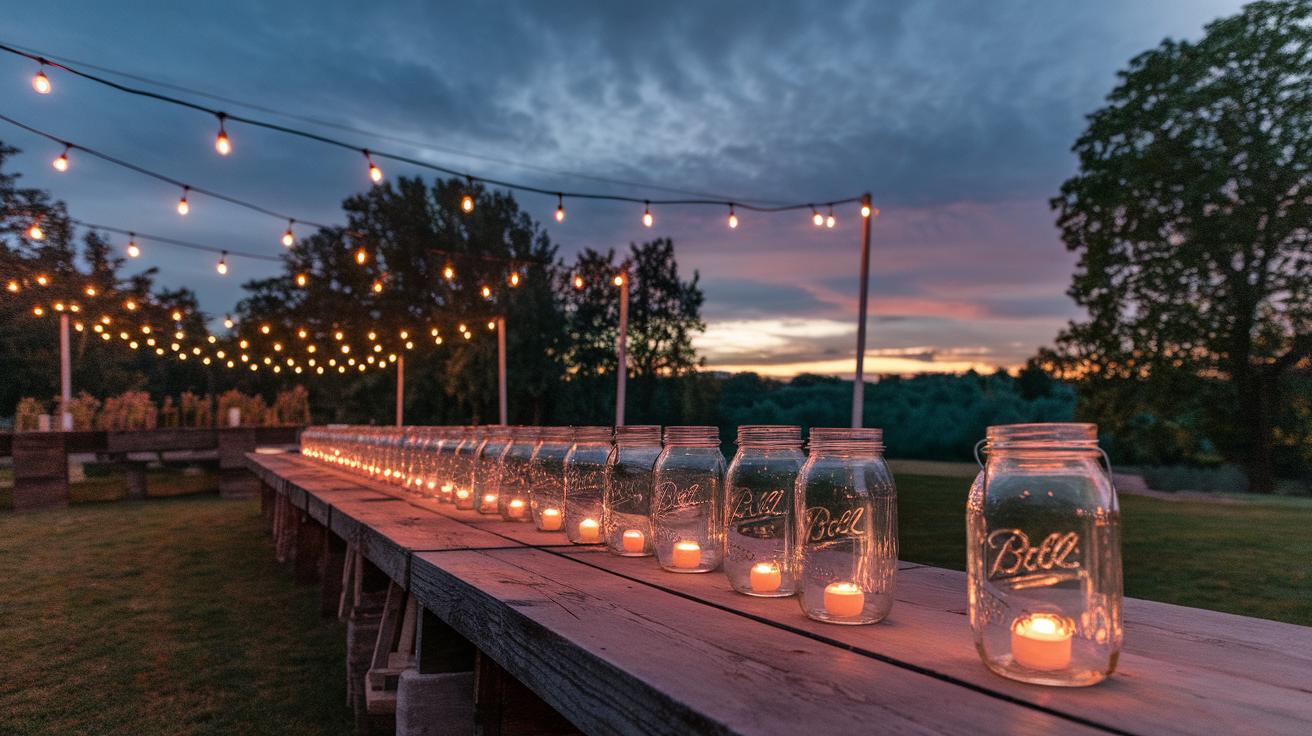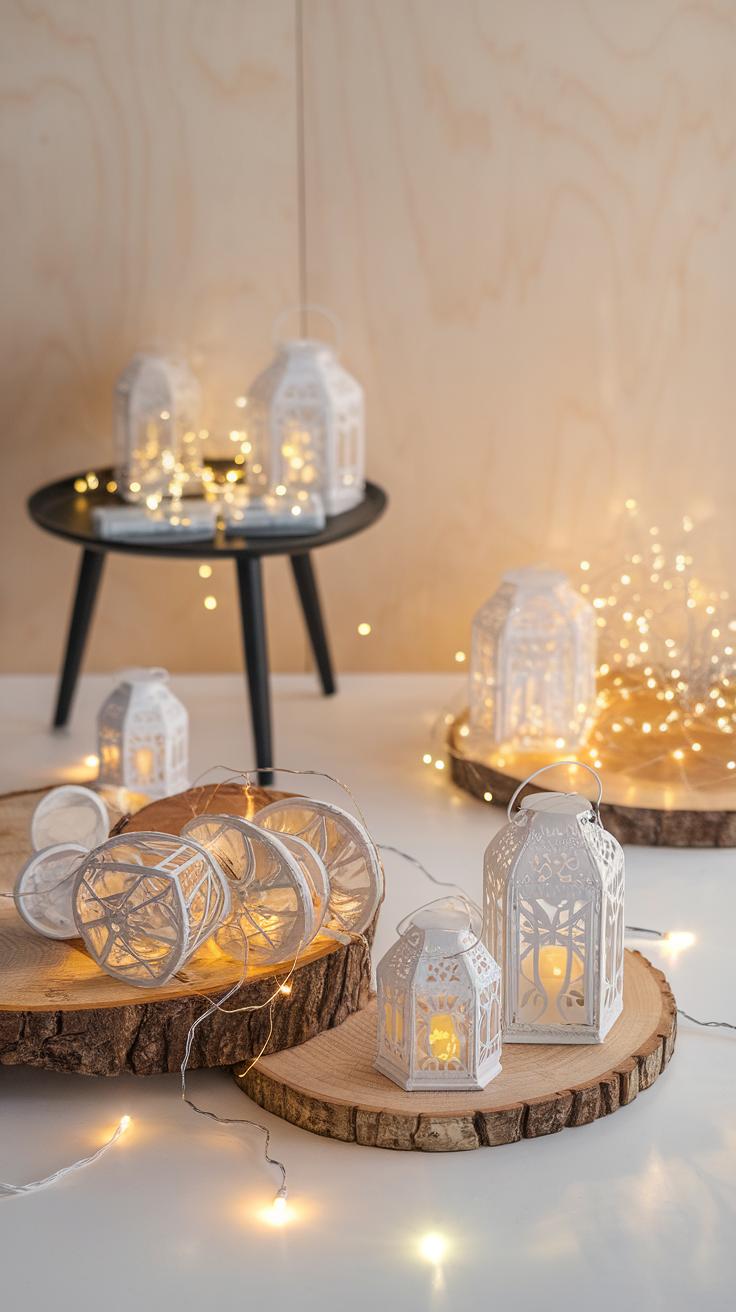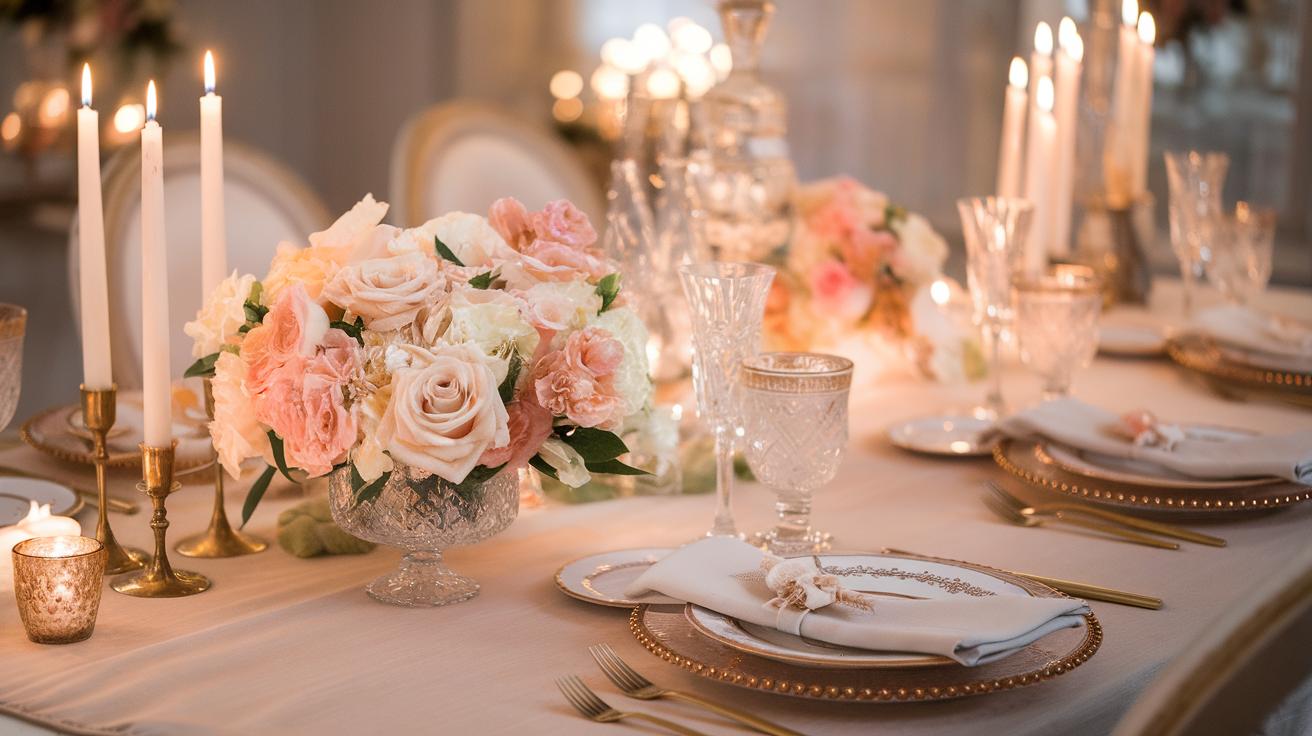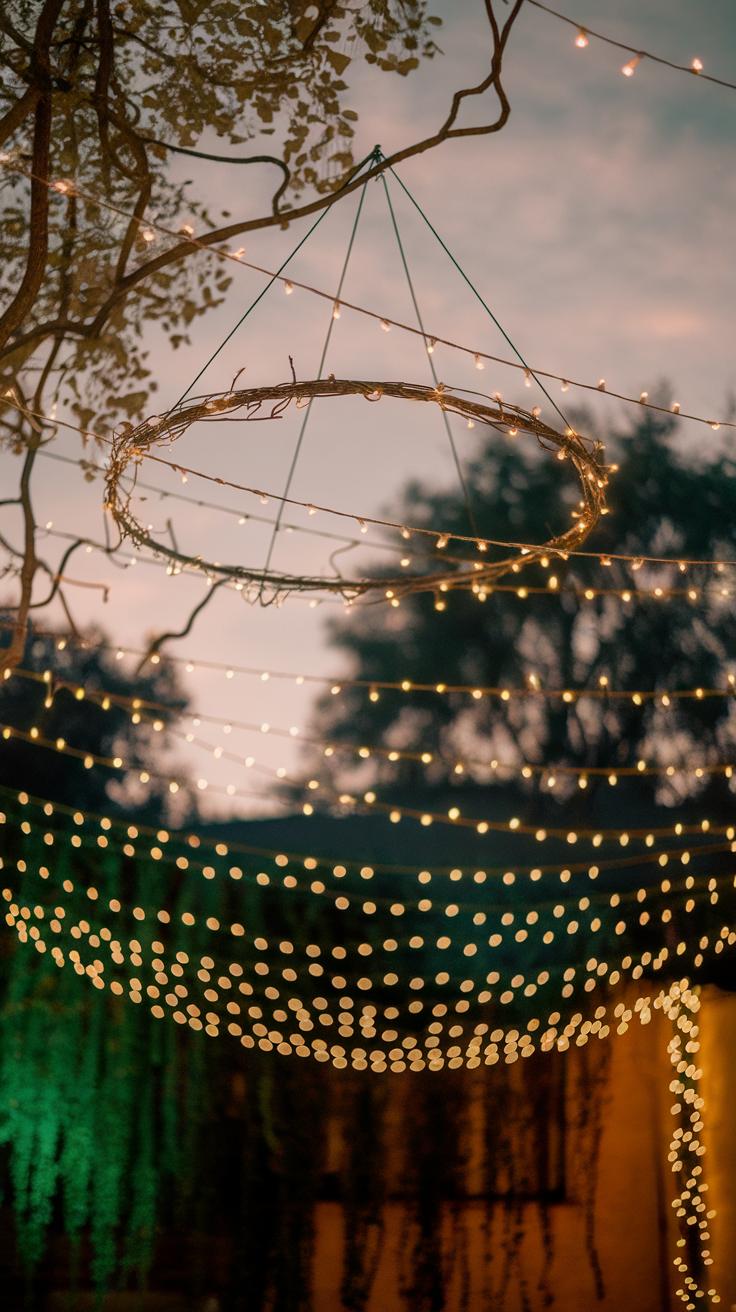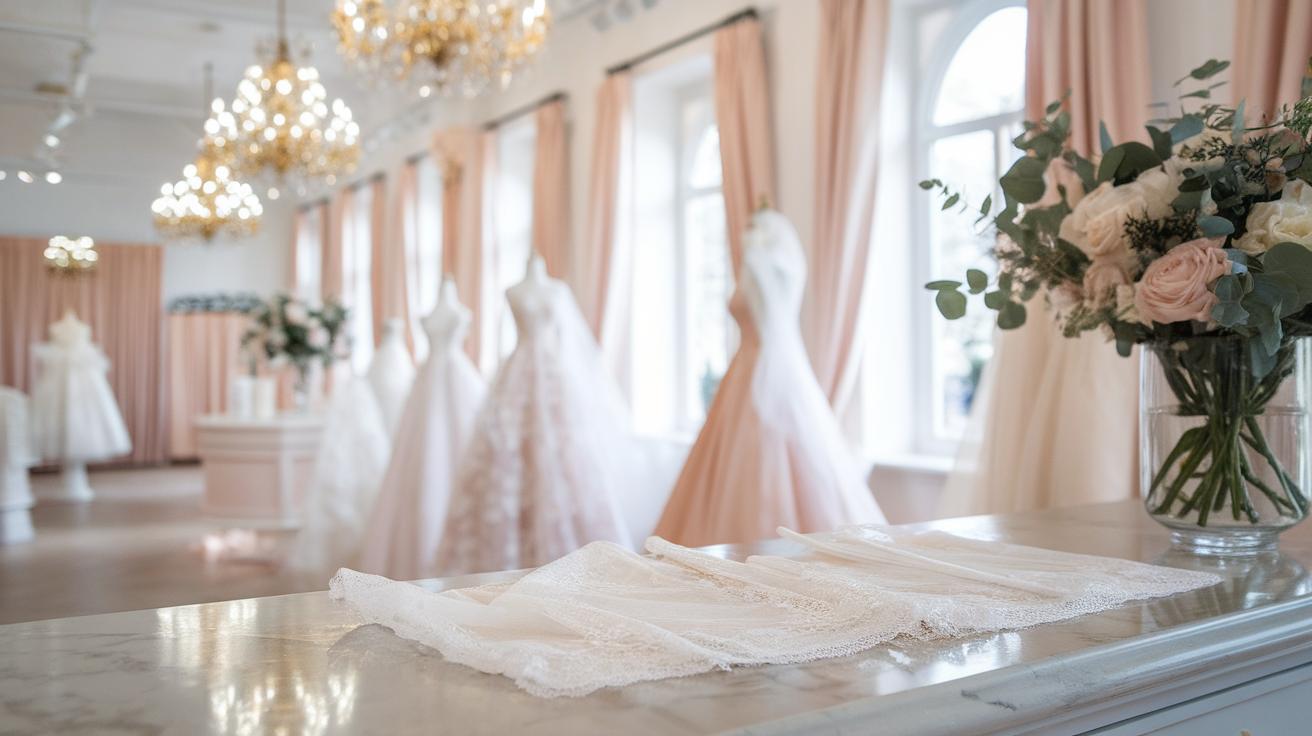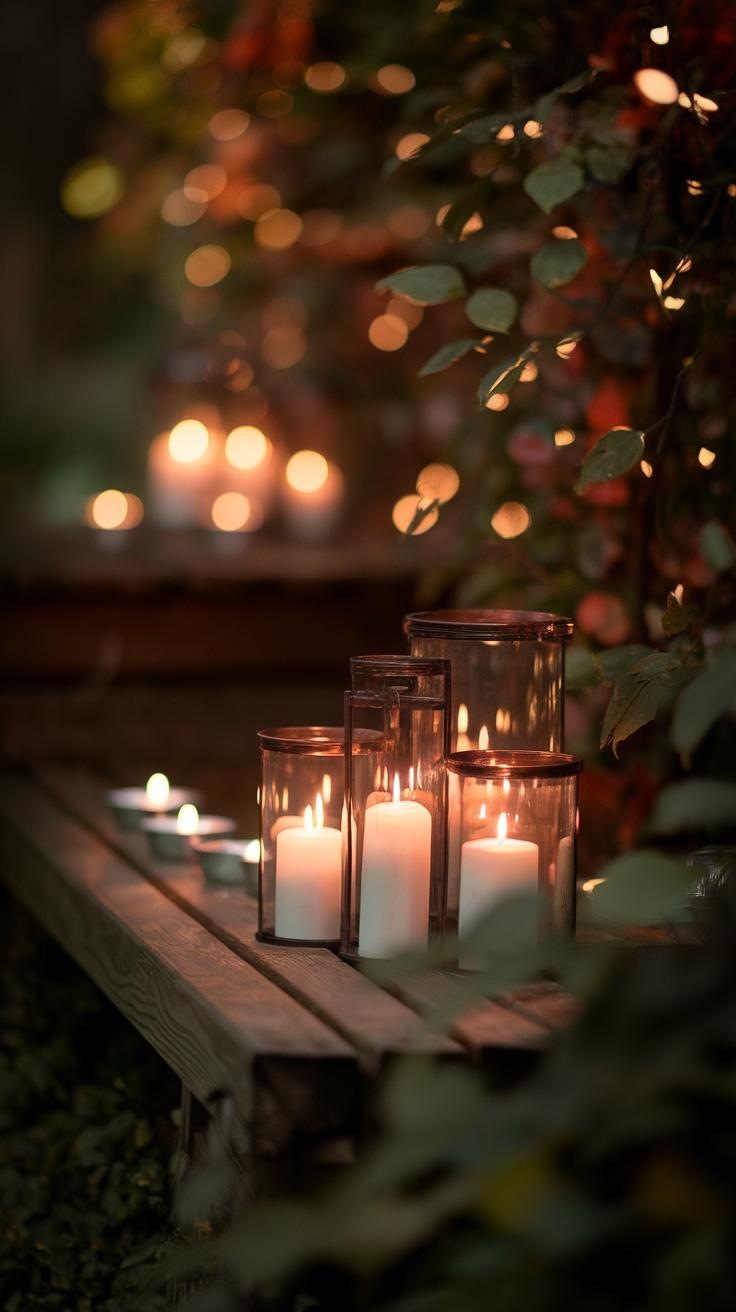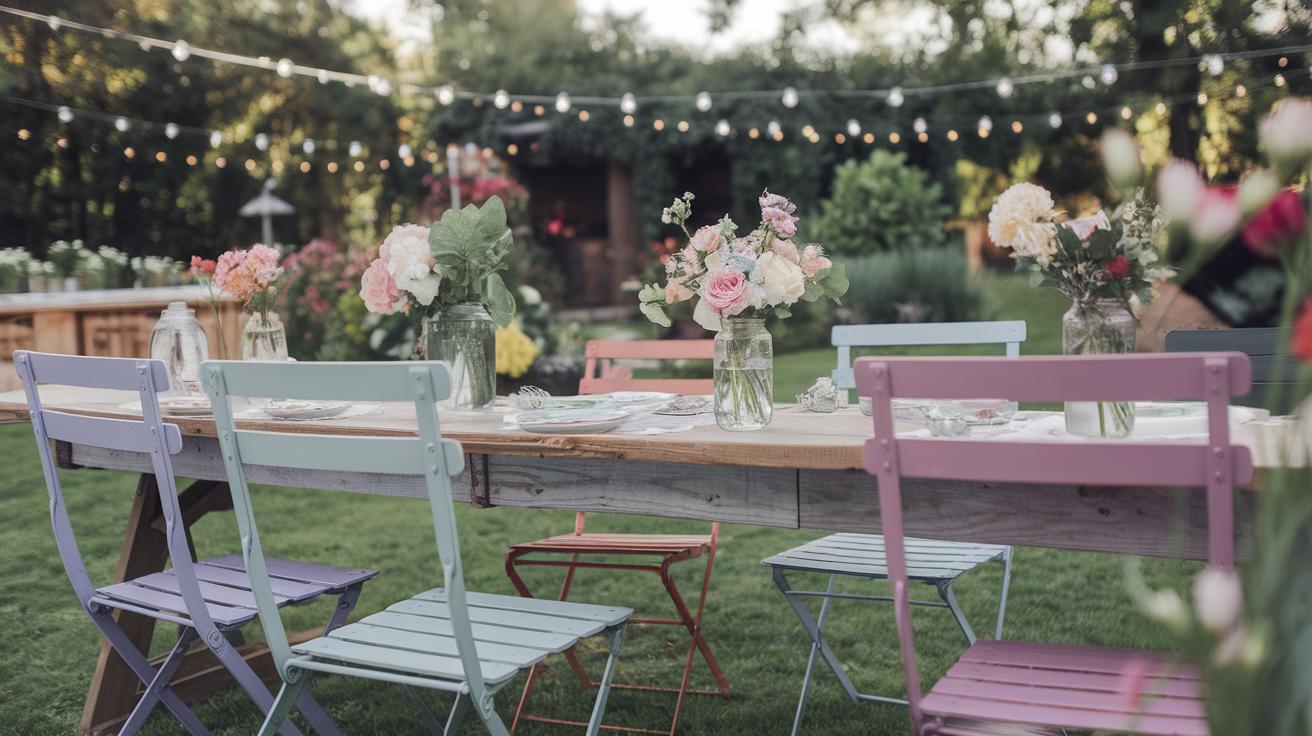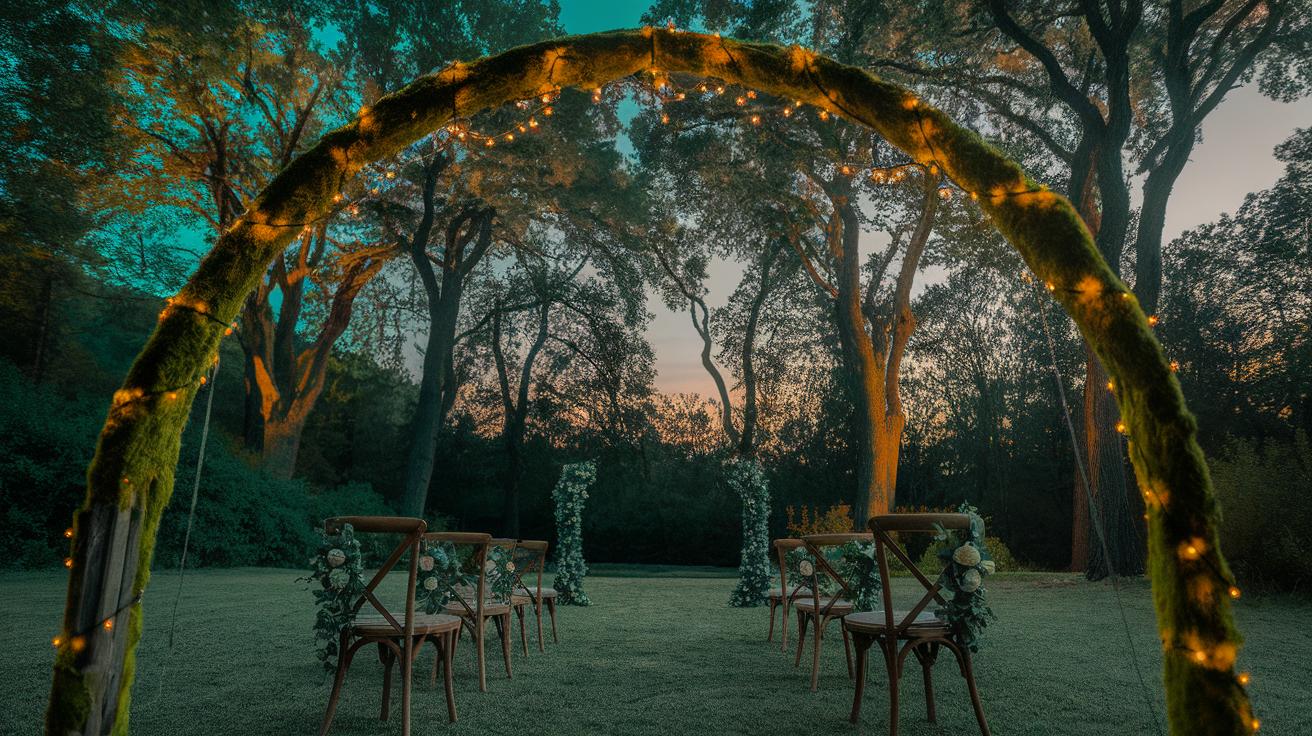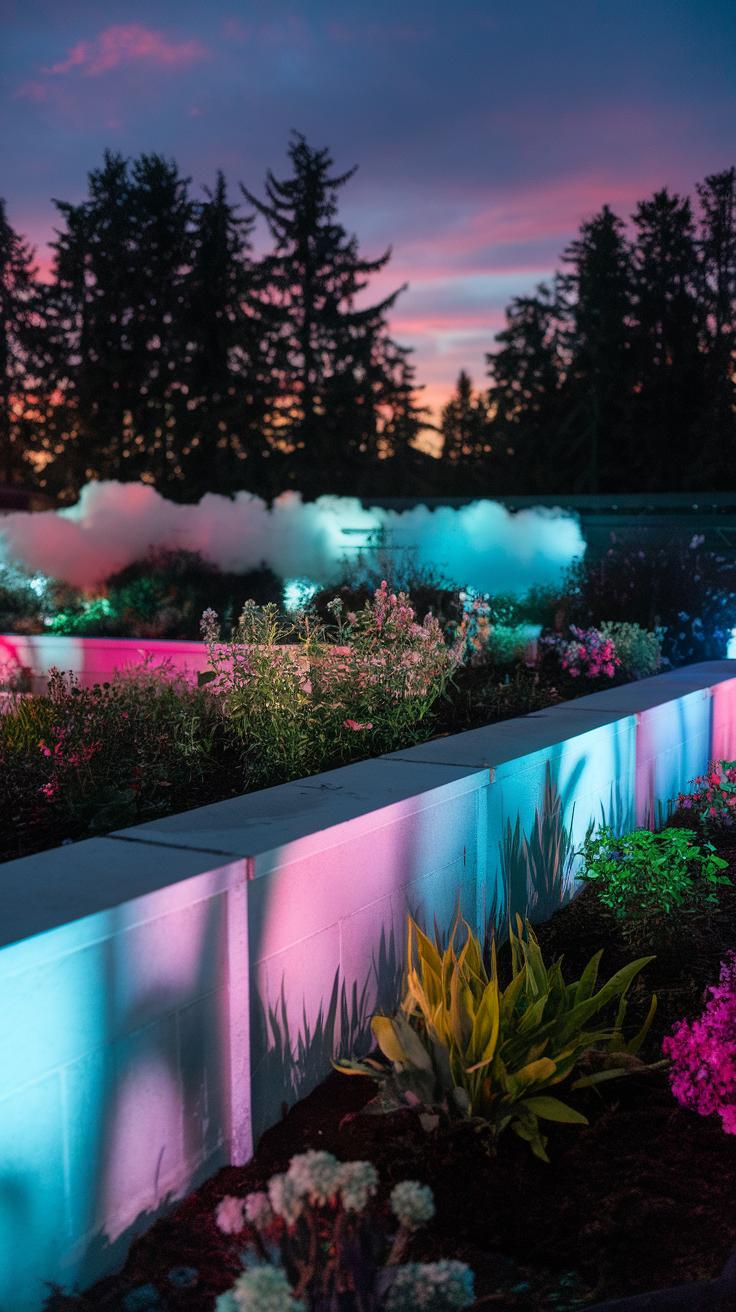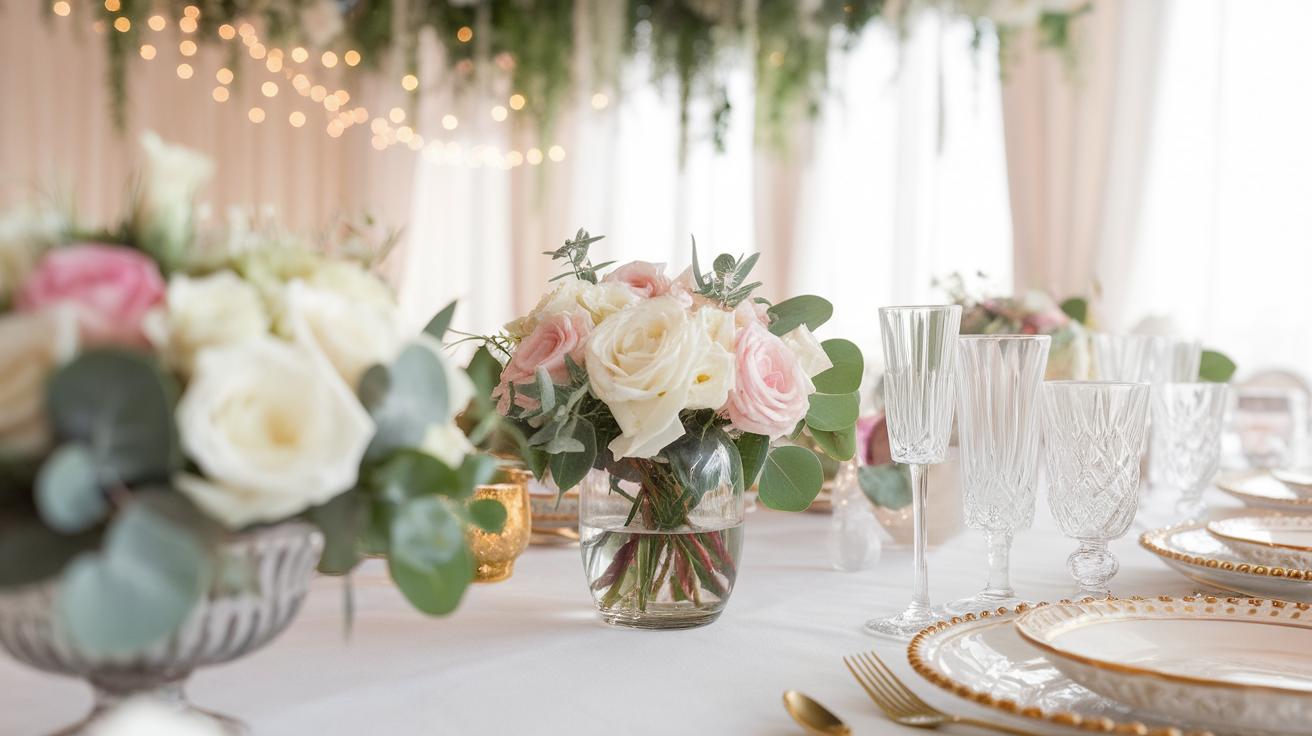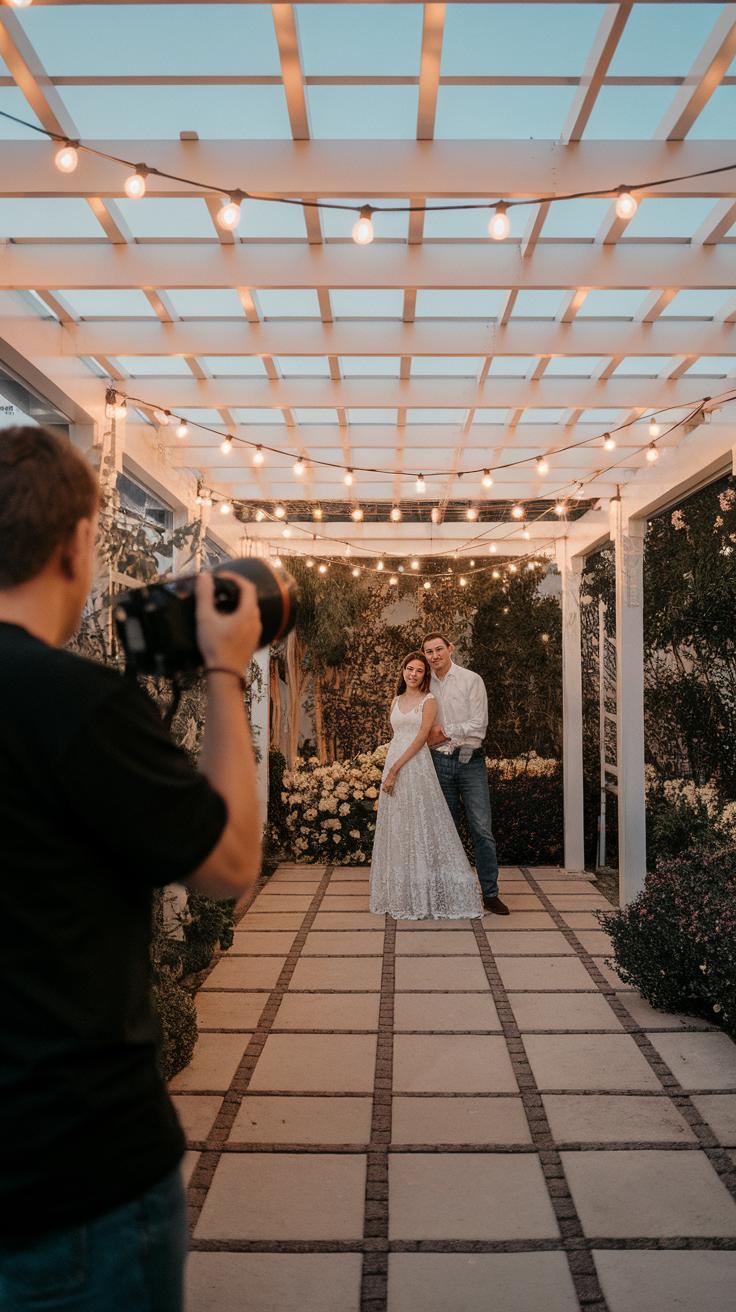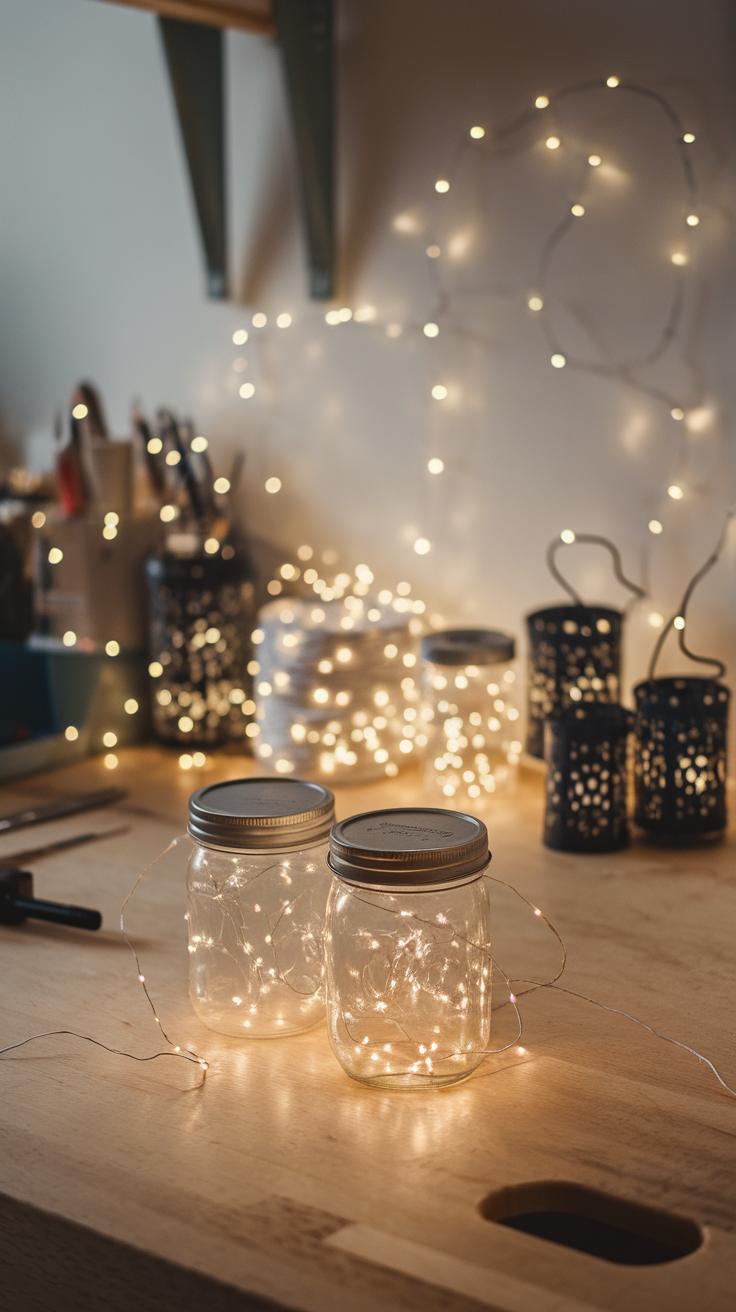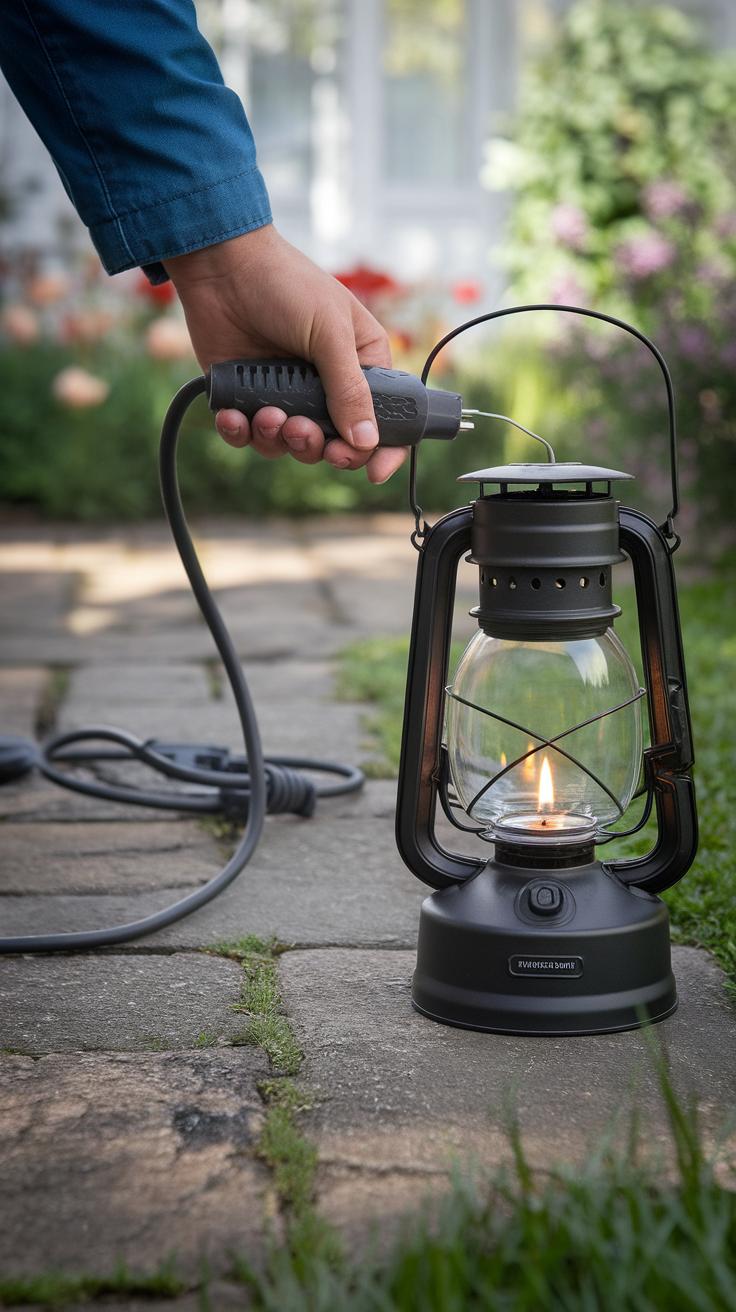Introduction
Lighting plays a key role in shaping the ambiance of your wedding day. Thoughtful lighting design makes your celebration more enchanting and memorable. It helps set the mood, highlight important moments, and transform ordinary spaces into elegant settings. You have many lighting options to consider. Each can bring a unique feel and style to your wedding. Exploring different ideas allows you to find the perfect lighting for your venue, theme, and personal taste.
Choosing the right wedding lights can feel overwhelming. You want them to complement the décor and the venue’s natural features. The lighting should also enhance photography and keep guests comfortable. How do you select the perfect lighting setup that fits your vision and budget? What kinds of lights work best for indoor versus outdoor ceremonies? This article provides practical ideas and suggestions to help you make the best choices for your special day.
Understanding Different Types of Wedding Lights
Wedding lights come in many forms, each shaping your event’s mood in unique ways. Fairy lights offer a delicate glow that adds charm and softness. These tiny bulbs work well with rustic and garden themes. Lanterns create a classic, cozy feel and can hang from trees or ceilings, perfect for vintage or boho settings. Chandeliers bring elegance and sophistication, ideal for formal venues like ballrooms or mansions. Candles provide warmth and intimacy, especially when placed on tables or along aisles. LED installations offer flexibility with color-changing options and energy efficiency, fitting for modern or outdoor weddings. How do you want your guests to feel when they enter your space? Understanding these options helps you decide which light types highlight your venue and match your wedding style.
Indoor Lighting Options
Indoor lighting must work with your venue’s architecture and décor. Suspended chandeliers emphasize high ceilings and add grandeur, while fairy lights or string lights soften walls and windows. Uplighting can highlight columns or textured surfaces for depth. Candles on tables add a romantic touch, but pairing them with dimmable fixtures ensures safety and control. Consider LED spotlights for artwork or focal points like the cake table. Think about the room’s colors and materials when selecting light tones – warmer bulbs invite comfort, cooler tones feel fresh and modern. Will you use existing lighting, or bring in rentals? Planning lighting as part of design supports the atmosphere without overwhelming the space.
Outdoor Lighting Solutions
Outdoor weddings ask for lighting that withstands weather and covers larger areas. String lights stretch across tents or trees, creating inviting pathways and overhead canopies. Tiki torches add natural flickers and a tropical touch but require safety measures for open flames. Solar-powered lights offer eco-friendly, low-maintenance options along walkways or garden beds, charging during the day and glowing softly at night. Look for weatherproof materials to avoid damage from wind or rain. Power sources might involve generators or long extension cords, so you must plan placement carefully to keep cables hidden and safe. Outdoor lighting should highlight natural features without overpowering the open air. How will you balance beauty and practicality in your outdoor setup?
Planning Your Wedding Lighting Setup
Start by visiting your venue at the same time your wedding will happen. Observe natural light sources, shadows, and any built-in lighting. Pay attention to windows, chandeliers, or any wall sconces. How much light do they provide, and where does it fall? Note dark corners or areas that look dull. Can the existing wiring support extra lights? These questions help you plan what lighting to add.
Consider the wedding day’s timeline. Will the ceremony be during daylight or after dark? Plan to adjust lighting as the day changes to keep every moment well-lit and comfortable. Use dimmers or color changes to shift ambiance from formal to festive as you move from ceremony to reception.
Think about your lighting budget early. Knowing your limits will guide choices on equipment and rentals. Talk with your venue staff or a lighting professional to understand what is feasible and safe. Will you need permission to hang fixtures or bring in certain types of lights? This step avoids surprises later.
Assessing the Venue
Examine the venue’s architecture closely. High ceilings or exposed beams may allow hanging lights like chandeliers or string installations. Reflective surfaces, like mirrors or polished floors, can enhance lighting effects and reduce the number of lights needed. Spot these features and plan how to use them.
Check for electrical outlets and power sources. Are they near your key areas, or will you need extension cords or portable battery packs? Look for restrictions on open flames or certain equipment your lighting plan might require.
Consider the venue’s natural style. A rustic barn might benefit from soft lanterns and warm bulbs. A modern space could suit sleek LEDs or color washes. Let your venue’s look guide your lighting choices to create a cohesive experience.
Highlighting Focal Areas
Identify where your guests’ eyes should focus. The altar or ceremony site needs clear, flattering light so the couple stands out. Avoid harsh overheads; try soft uplighting or spotlights that follow the action.
Tables deserve attention too. Use small, focused lights or candles to illuminate guest faces but keep the overall feel cozy. Avoid glare on glasses or plates. For the dance floor, brighter, dynamic lighting encourages activity and fun.
Photo zones require balanced light without sharp shadows. Consider adding ring lights or carefully placed lanterns. Plan extra light for key photo moments, like cake cutting or first dance. What moments will you want captured perfectly? Make sure those areas get special lighting treatment.
Creative Ideas With String Lights
String lights offer simple yet powerful ways to shape your wedding’s look and feel. Wrapping them around columns creates soft glows that draw attention to architectural details while adding charm. Do you want to highlight a dance floor or a cozy lounge area? String lights can transform these spots into inviting spaces under gentle illumination.
For outdoor ceremonies or receptions, lining pathways with string or fairy lights improves safety by marking walkways clearly. This also gives your guests a sense of guidance after dark and enhances the setting’s aesthetic. Imagine your guests following a glowing path that feels personal and welcoming.
String lights also work well to structure spaces without walls. They help define different areas like dining, dancing, and relaxing zones. How might you use lights to encourage your guests to move and mingle? Consider using them both vertically and horizontally to shape your event’s flow.
Ceiling Canopies with String Lights
Creating a canopy using string lights transforms a reception space into an intimate area. Arrange strands in parallel lines stretching from a central point outward to the room’s edges. This setup mimics a tent-like effect by softening the ceiling overhead.
Fix the lights to hooks, beams, or poles depending on your venue. The key is ensuring the strands sit tight, avoiding sagging. Using warm-colored bulbs makes the space feel inviting and calm.
Think about combining your string light canopy with hanging floral arrangements or fabric to add layers. This combination creates texture while framing the space above guests’ heads without feeling crowded. Could your ceiling canopy double as a backdrop for photos or speeches?
Pathway Lighting
String lights can be positioned low along walkways or draped around nearby plants to provide subtle illumination. Secure them close to the ground for clear visibility and safety. Small stakes or clips help keep the lights steady.
You might cross lights over narrow paths or run them linearly for long halls and outdoor areas. Fairy lights work great inside glass jars placed along paths or lining stairs.
To add creative flair, combine string lights with lanterns or solar-powered lights spaced regularly. This mix maintains brightness and adds visual interest. How about matching your pathway lighting style to your wedding theme? This attention to detail shows your guests you planned every step thoughtfully.
Incorporating Lanterns and Candles
Lanterns and candles bring a soft glow that feels intimate and inviting. You can use lanterns in many styles to fit your wedding theme, from rustic wooden frames to sleek metal designs. Think about adding vintage lanterns along pathways or grouping modern ones on the floor to frame your ceremony space.
Candles raise the elegance with flickering light. Mix candle types to build interest—combine tall pillars with small votives, or place candles in glass holders to protect against wind if your wedding is outdoors. Arranged on tables, they create warmth without overpowering other decor.
Safety matters when using open flames. Place candles inside lanterns or glass containers. Keep flammable materials away and assign someone to monitor burning candles. LED candles can offer a safe alternative while keeping the cozy look.
Hanging and Table Lanterns
Suspend lanterns from trees, ceiling beams, or poles to add height and sparkle. Hanging lanterns catch the eye and fill the space with soft light. You might hang paper lanterns for a casual feel or metal lanterns for a polished look.
On tables, smaller lanterns act as decorative accents. Choose lanterns that fit your color palette and style. Place a cluster of mini lanterns to create a visual focus or use a single lantern as a simple centerpiece.
When hanging lanterns, make sure they are secure to avoid accidents. Use sturdy hooks and check weight limits. For outdoor weddings, consider lanterns that can resist breezes or use battery-operated lights inside.
Candle Centerpieces
Candle centerpieces shape the mood of each table. Glass holders protect flames and let the light shine clearly. Pillar candles add height and solidity, making them easy to see across the table, while votives offer a smaller, delicate glow.
Try grouping different candle styles together for a layered look. Surround pillars with greenery or flowers for a natural touch. For beach or outdoor weddings, sand-filled holders can keep candles steady and add texture.
Ask yourself how much light you want at each table. If your reception is dimly lit, larger candles will help guests see clearly. Use candles with scents cautiously to avoid overwhelming the atmosphere or triggering allergies.
Using Color and Effects to Enhance the Atmosphere
Color plays a major role in shaping how your wedding feels. When you use colored lighting, you can match the mood to your theme. Imagine soft blues for a calm, serene evening or vibrant reds for bold energy. Matching lights to your wedding palette makes the space feel more personal and connected to your story.
Special effects like uplighting, gobos, and even fairy dust add layers of interest without overpowering the event. Uplighting can highlight architectural features, while gobos project patterns or names onto walls, creating focal points. Subtle sparkles or haze can give a gentle shimmer to the air. The key is balancing these effects so they add drama but keep guests comfortable.
Have you thought about which colors and effects reflect your style? Choosing the right mix makes your venue come alive. What kind of mood do you want your guests to remember? These lighting techniques let you control the energy and feel of your day.
Colored Uplighting Techniques
Uplighting works well around walls, drapes, or trees to enhance your venue with color. Placing lights at the base lets colors wash upward, drawing attention to textures and shapes. This can turn a plain wall into a glowing backdrop or spotlight natural features outdoors.
Coordinating uplight colors with your wedding palette ties the look together. If your colors include soft lavender and peach, use those shades in uplighting to create harmony. Changing the lights throughout the night can also guide the event’s pace, using warmer tones during dinner and lively ones for dancing.
Where will you place uplights to make the biggest impact? How can the colors reinforce your theme? Thoughtful positioning and color choice turn a space from ordinary to memorable.
Special Effects in Lighting
Special lighting effects add personality without overwhelming guests. Gobos, which are stencils or templates placed in front of lights, create patterns or display names and dates on floors or walls. This personal touch helps emphasize the celebration’s uniqueness.
Subtle light effects like fairy dust or gentle haze can soften edges and give depth to the room. These effects catch and scatter light, creating a dreamy ambiance. Motion effects, like slow color changes or twinkling, engage eyes without distraction.
Think about the level of drama you want. Are you aiming for gentle elegance or a lively party vibe? Using specials carefully helps set the tone while keeping your guests comfortable and focused on each moment.
Lighting Considerations for Photography
Lighting shapes how your wedding photos will look. Soft, even light helps capture natural skin tones and smooth textures. Harsh shadows can create unflattering images and distract from your special moment. Think about the direction and quality of light. Placing lights to avoid direct overhead beams keeps faces bright and reduces sharp shadows under eyes and noses.
Choose lighting that spreads gently across subjects. Diffusers, softboxes, or even white fabric can soften bright sources. Photographers often prefer natural light or warm, adjustable LEDs to maintain flattering colors. You want photos to reflect true emotions, so lighting that feels natural and balanced matters.
How will your venue’s light change during the day? Rooms with big windows offer great daylight but can create strong contrasts. You need to balance indoor and outdoor light if your ceremony moves between spaces. Planning lighting with your photographer ensures every shot is clear, colorful, and beautiful.
Balancing Light for Photos
Make sure both the couple and guests stand out in photos. Position lights to fill shadows on faces and avoid dark spots. Use multiple light sources to avoid uneven brightness. Ring lights or soft LED panels work well to create glow without glare.
During the ceremony, softer lights on the altar highlight the couple and officiant. For the reception, uplights around the room keep faces illuminated while setting the mood. Can you move lights as the celebration goes from ceremony to dancing? Portable options help keep the focus where it’s needed most.
Test your setup before the event. Ask your photographer if the lighting captures everyone well. Balanced light makes photos richer and helps your memories come alive on every frame.
Avoiding Common Lighting Issues
Mixed lighting colors can ruin photos by creating odd skin tones. Avoid combining daylight, fluorescent, and incandescent bulbs without proper color correction. Ask your lighting team to match the color temperature for consistency.
Flickering lights often come from cheap or incompatible bulbs. Test all lighting gear in advance to spot and fix flickers. Flickering distracts in photos and videos, making your memories look shaky or unprofessional.
Watch out for reflections and glare on shiny surfaces like glasses or decorations. Position lights at angles that minimize these problems. It’s easier to fix lighting before the event than editing photos afterward.
Have you considered how your lighting setup affects not only the mood but the quality of your photos? Smart planning ensures your wedding pictures show your day at its best.
Budget Friendly Wedding Lighting Ideas
You can make your wedding lighting look amazing without spending a fortune. Focus on simple, affordable lights that create a warm, inviting atmosphere. Battery-operated fairy lights give you flexibility and avoid tricky wires. String them around tables, chairs, or along walkways to add gentle glows. Candles offer a classic touch and come in many sizes. Use flameless LED candles for safety and last-minute convenience.
Think about where you want to place these lights for the best effect. Layer different sources of light to add depth and interest. Mixing fairy lights with candles or lanterns prevents your space from feeling flat. Ask yourself how to balance brightness and mood without overdoing it. Small touches can make a big difference when used thoughtfully.
Cost Effective Lighting Options
Battery-operated fairy lights cost little and don’t need an outlet. They come in many colors and lengths. These can wrap around arches, decorate tables, or fill glass jars. Candles provide warm light and come in large packs that fit any budget. Using LED candles cuts down on fire risks. Paper lanterns or string lights from discount stores create festive looks at low cost. Don’t forget solar-powered garden lights for outdoor settings. These recharge during the day and glow softly at night. Selecting practical, low-cost lights helps you save money without losing style.
Simple DIY Lighting Projects
Creating your own lighting adds a personal touch and cuts costs. Mason jar lanterns work well for tables or pathways. Put fairy lights or candles inside jars and hang them with twine. Painted votive holders let you match wedding colors while softening candlelight. Use mod podge and tissue paper or metallic paint for quick designs. Try simple paper garlands with tiny lights woven through for overhead accents. These projects take little time but add charm. Think about which DIY idea fits your theme. Would your guests enjoy soft glows from handmade jars or colorful votives?
Safety Tips for Wedding Lighting
Wedding lighting adds charm, but safety should be your priority. Unsecured wires, overloaded circuits, or poorly placed lights can cause accidents. Check all electrical equipment before use to avoid sparks or shorts. Arrange cords away from walkways to prevent trips. Use outdoor-rated fixtures for open-air venues to withstand weather. Never leave lights running unattended for long periods.
Check how many devices you plug into one outlet to avoid overload. Hire or consult a professional if you are unsure about wiring. Have fire extinguishers nearby whenever electrical or open flame sources exist. Do not block emergency exits with decorations or cables. Make sure your setup meets local safety rules and venue requirements.
Will you inspect your lighting setup carefully before the big day? This step can keep your celebration safe and smooth.
Using Electrical Lights Safely
Use string lights designed for the type of venue you choose. Indoor lights often are not rated for outdoor conditions. Check the labels on all lights before use. Plug light strands directly into outlets or use a heavy-duty extension cord made for outdoor use if needed.
Secure lights with hooks or clips rather than nails or staples to avoid damaging wires. Keep plugs and connectors dry and off the ground. Avoid daisy-chaining too many light strands, as this risks overheating. If you notice flickering or smells from bulbs, turn off the lights immediately and replace faulty parts.
Consider a timer to automatically switch lights off after a set period. This reduces the danger of overheating and saves power. Do you have a plan to test all lights and fix problems early? This can prevent last-minute surprises and keep everyone safe.
Safe Candle Use Guidelines
Place candles on stable, heat-resistant surfaces far from curtains, foliage, and decorations. Use tall candle holders or hurricane lamps to protect flames from drafts and to stop guests from knocking them over. Never leave candles burning unattended or near children and pets.
If you want a similar cozy glow without an open flame, consider flameless LED candles. These options avoid fire risks and can last longer without supervision. Battery-operated candles also come in various styles that fit different wedding themes.
Use candle trays filled with sand or pebbles to catch melting wax and prevent fires. Ask the venue about any rules against open flames, especially outdoors. How will you balance ambiance with safety? Planning this ahead will ensure a worry-free celebration for you and your guests.
Conclusions
Carefully chosen wedding lights can truly transform your event. They highlight key elements, enhance the mood, and create beautiful photo opportunities. Considering factors like venue type, time of day, and overall style will guide your selections. You do not need extravagant equipment to achieve stunning effects; simple strings of lights or lanterns often do the job effectively. The right lighting can make your day feel more personal and magical.
Reflect on the ambiance you want to create. Experiment with layers of light, combining ambient, task, and accent lighting for a balanced look. Use color temperature and light placement strategically to highlight focal points and offer comfort. By planning your wedding lights thoughtfully, you ensure a radiant setting that evokes lasting happy memories for you and your guests.

